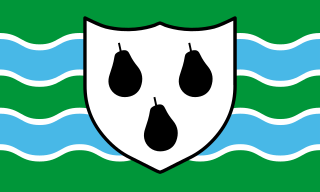
Worcestershire is a county in the West Midlands of England.

Worcester is a cathedral city and the ceremonial county town of Worcestershire, in England, 30 miles (48 km) south-west of Birmingham, 101 miles (163 km) north-west of London, 27 miles (43 km) north of Gloucester and 23 miles (37 km) north-east of Hereford. The estimated population in 2019 was 102,791. The River Severn flanks the western side of the city centre, which is overlooked by Worcester Cathedral. The Battle of Worcester in 1651 was the final one in the English Civil War, where Oliver Cromwell's New Model Army defeated King Charles II's Royalists. Worcester is the home of Royal Worcester Porcelain, composer Edward Elgar, Lea & Perrins, makers of traditional Worcestershire sauce, the University of Worcester, and Berrow's Worcester Journal, claimed as the world's oldest newspaper.

The Battle of Worcester took place on 3 September 1651 at Worcester, England. It was the final battle of the English Civil War. Oliver Cromwell's Parliamentary New Model Army, 28,000 strong, defeated King Charles II's 16,000 Royalists, of whom the vast majority were Scottish.

The River Teme rises in Mid Wales, south of Newtown, and flows southeast roughly forming the border between England and Wales for several miles through Knighton before becoming fully English in the vicinity of Bucknell and continuing east to Ludlow in Shropshire, then to the north of Tenbury Wells on the Shropshire/Worcestershire border there, on its way to join the River Severn south of Worcester. The whole of the River Teme was designated as an SSSI, by English Nature, in 1996.

Malvern Hills is a local government district in Worcestershire, England. Its council is based in the town of Malvern, and its area covers most of the western half of the county, including the small towns of Tenbury and Upton. It was originally formed in 1974 and was subject to a significant boundary reform in 1998. In the 2011 census the population of the Malvern Hills district was 74,631.
This is a timeline of events leading up to, culminating in, and resulting from the English Civil Wars.
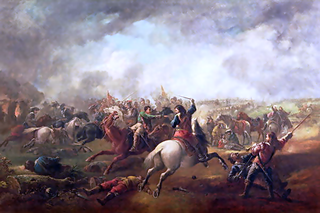
The First English Civil War was fought in England and Wales, from August 1642 to June 1646. It forms one of the conflicts known collectively as the 1638 to 1651 Wars of the Three Kingdoms, which also took place in Scotland and Ireland. These include the 1638 to 1640 Bishops' Wars, the Irish Confederate Wars, the Second English Civil War, the Third English Civil War, and the Cromwellian conquest of Ireland. It is estimated that from 1638 to 1651, 15–20% of all adult males in England and Wales served in the military, and around 4% of the total population died from war-related causes, compared to 2.23% in World War I. These figures are important in understanding the impact of the conflict on society, and the bitterness it engendered.

Shelsley Walsh is a small village and civil parish in Worcestershire, England, on the western side of the River Teme. For administrative purposes it is presently located in the Teme Valley ward of the county’s Malvern Hills district. In the 2011 Census there was an estimated population of 28 people in 12 households. The site has been farmed since Anglo Saxon times and there are also vestiges of former industry, but it is now best known for its association with the Shelsley Walsh Speed Hill Climb.

The area now known as Worcestershire has had human presence for over half a million years. Interrupted by two ice ages, Worcestershire has had continuous settlement since roughly 10,000 years ago. In the Iron Age, the area was dominated by a series of hill forts, and the beginnings of industrial activity including pottery and salt mining can be found. It seems to have been relatively unimportant during the Roman era, with the exception of the salt workings.

White Ladies Aston is a village in the Wychavon in Worcestershire, England, United Kingdom, and also lends its name to the Civil Parish in which the village is located. The village is located to the east of the A44 which started as a Saltway linking Droitwich to Oxford. To the south is Pershore and five miles west is Worcester. The parish is bound to the east by the Bow Brook. The parish, according to the 2011 census, has 87 households with 220 residents.

Broadwas, or Broadwas-on-Teme, is a village and civil parish in the Malvern Hills district of Worcestershire, England. According to the 2001 census it had a population of 307. The village is located on the River Teme, about 6 miles west of Worcester on the A44 road.
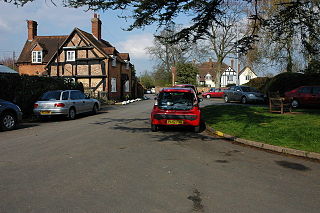
Hanley Castle is a village and civil parish in Worcestershire, England, between the towns of Malvern and Upton upon Severn and a short distance from the River Severn. It lies in the administrative area of Malvern Hills District, and is part of the informal region known as The Malverns. It is served by bus service 332 Worcester - Upton upon Severn - Hanley Castle operated by Aston Coaches.

The Battle of Powick Bridge was a skirmish fought on 23 September 1642 just south of Worcester, England, during the First English Civil War. It was the first engagement between elements of the principal field armies of the Royalists and Parliamentarians. Sir John Byron was escorting a Royalist convoy of valuables from Oxford to King Charles's army in Shrewsbury and, worried about the proximity of the Parliamentarians, took refuge in Worcester on 16 September to await reinforcements. The Royalists despatched a force commanded by Prince Rupert. Meanwhile, the Parliamentarians sent a detachment, under Colonel John Brown, to try to capture the convoy. Each force consisted of around 1,000 mounted troops, a mix of cavalry and dragoons.

Clifton upon Teme is a village and civil parish in the Malvern Hills District in the county of Worcestershire, England.
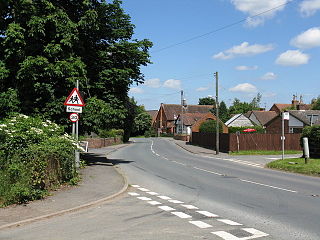
Callow End is a constituent village of the civil parish of Powick in the Malvern Hills District of Worcestershire, England. It is located on the B4424 road about 1 mile (1.6 km) to the south of its junction with the main A449 Malvern to Worcester road.

Worcestershire was the county where the first battle and last battle of the English Civil War took place. The first battle, the Battle of Powick Bridge, fought on 23 September 1642, was a cavalry skirmish and a victory for the Royalists (Cavaliers). The final battle, the battle of Worcester, fought on 3 September 1651, was decisive and ended the war with a Parliamentary (Roundhead) victory and King Charles II a wanted fugitive.

Ripple is a village and civil parish in the county of Worcestershire, England. Ripple is one of the most southerly parishes in the county and is situated on the A38 road with the River Severn as its western boundary. Together with the villages and hamlets of Ryall, Holly Green, The Grove, Naunton, and Uckinghall, the parish has a combined population of 1,799.
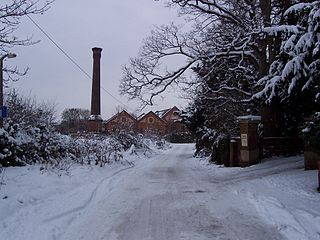
Lower Wick is a suburb of Worcester situated to the south-west of the city. Lower Wick is located to the south of St. John's and to the west of the River Severn, adjacent to Powick. It is primarily composed of a 1960s housing estate made up of roads with a Canadian theme to their names, but there is a newer 1990s housing development where the roads are named after bird species.

The Battle of Kings Norton was fought on 17 October 1642. The skirmish developed out of a chance encounter between Royalists under the command of Prince Rupert and Parliamentarians under the command of Lord Willoughby. Both forces had been on their way to join their respective armies which were later to meet at Edgehill in the first pitched battle of the First English Civil War. The Parliamentarians won the encounter and both forces proceeded to join their respective armies.
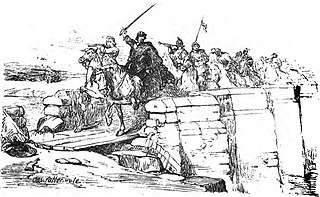
The Battle of Upton was fought on 28 August 1651 when a New Model Army detachment under the command of Colonel John Lambert made a surprise attack on Royalists defending the river Severn crossing at Upton-upon-Severn, 6 miles (9.7 km) below Worcester. In the action which followed the Royalist commander Major General Edward Massey was severely wounded and the surviving Royalists were driven out of the town and north along the Worcester Road.





























